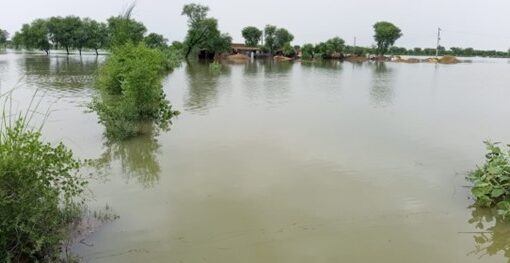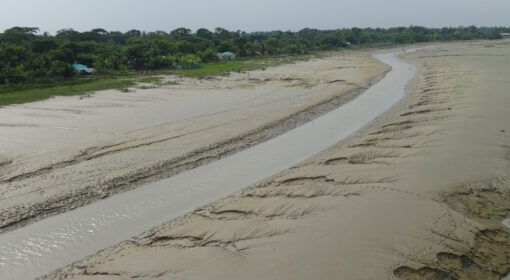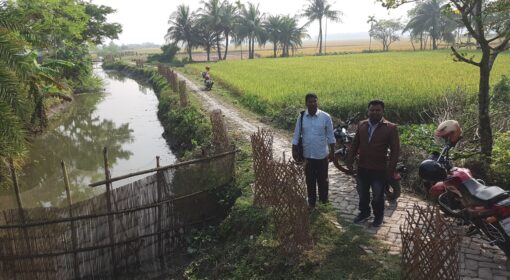Authors: Dr. Dung Duc Tran (Centre of Water Management and Climate Change, Vietnam), Prof. Mashfiqus Salehin (Institute of Water and Flood Management (IWFM) Bangladesh University of Engineering and Technology (BUET)), dr. Frank van Steenbergen (MetaMeta), David Mornout (MetaMeta), Dr. Long Hoang (MetaMeta)
It seems the hardest thing to do: preserving the assets after creating them. Globally, a lack of operation and maintenance of water infrastructure[1] has been seen as a major obstacle to rendering sustained economic growth. What is common instead is the “BNR cycle”: build something, then neglect its upkeep, causing it to deteriorate and become unreliable. And then have another cycle of rehabilitation and rebuilding, followed by the same lack of asset management. It is a pity as some have estimated that 1 USD of maintenance is worth 7 USD of rebuilding costs.
This BNR cycle is pervasive in many settings. The Mekong Delta in Southeast Asia and the Ganges-Brahmaputra-Meghna system, despite their geographical distance, share several notable similarities. Both deltas are characterized by extensive river systems, making them fertile and agriculturally significant regions. Both are densely populated, and in both deltas, water management, as well as the operation and maintenance of water infrastructure, should be cornerstones of livelihoods and sustainable development. In both areas, sedimentation, river erosion, and gradual wear and tear of water infrastructure are constant threats needing constant care, including regular check-ups, systematic vigilance, monitoring, and preventive maintenance.
In both deltas, however, the emphasis has been on newly constructing or rebuilding infrastructure without commensurate attention to systematic operation and maintenance. It is assumed that O&M will just happen, but resource limitations, competing priorities, and organizational and procedural constraints in reality stand in the way. The lack of reliability or long-term functionality of the water infrastructure is slowing down progress in terms of benefits for the people and overall economic development (Rahman and Salehin, 2013).
In Bangladesh, the lack of asset management is visible in many ways: silted khals (canals) and rivers, waterlogged land, broken/eroded embankments and out-of-order dredging machines. This constant dilapidation has several root causes: 1) the lack of asset management procedures, 2) uncertain and insufficient funding for O&M, 3) when something goes wrong, slow emergency procedures, and 4) particular in river management a lack of framework to prioritize and combine river management with sand mining and new land development.

Similarly, in the Mekong Delta in Vietnam, the build-neglect-rebuild cycle is manifest. The Government has overemphasized the expansion of the vast irrigation infrastructure, but in comparison, O&M received little attention and funding. According to the World Bank, this thrust has been partly self-defeating: with a lack of maintenance leading to a deterioration in performance and a loss of agricultural productivity (World Bank, 2019). Maintenance of water infrastructure is often only executed in response to emergency, and there is less attention and resources for pro-active and scheduled maintenance of the water infrastructure.

We appear to live more in a world where all the time we need to be jolted into action rather than doing the basics. Driven by the pressing problems from rapid economic growth and rising sea levels, current topics that receive a lot of attention in water management in Vietnam are pollution and salinization. Resources tend to address those pressing themes rather than the O&M of existing water infrastructure.
O&M, moreover, is not static and needs to evolve too in response to changing environmental, social, and economic conditions. To start with, under rising sea levels, changing climate patterns, and insufficient coastal protection, salinity intrusion has become more pronounced in recent years, necessitating adapted O&M strategies. Secondly, upstream dams developed for hydropower, and, to a lesser extent, irrigation have interfered with the Mekong’s flow regime, whereby extreme floods tend to appear less frequently. This caused attention to the maintenance of the high dykes to wane away, though they still need to be kept in stability and strength. Upstream sediment trapping by dams and intensive sand mining have, however, resulted in more riverbank and coastal erosion and increased damages to critical infrastructures, including dikes, embankments, and roads – needing more priority there.
Now, it is time to address the root causes of the BNR cycle to boost the long-term functionality of water infrastructure to make investments in water infrastructure more effective and efficient, all to speed up progress and render the desired outcomes of sustainable development over the long term.
[1] This article discusses a selective group of water infrastructures such as water controlling systems of dams, canals, dikes, and focusses less on WASH (Water Sanitation and Hygiene).

References
Rahman, R., Salehin, M. (2013). Flood Risks and Reduction Approaches in Bangladesh. In: Shaw, R., Mallick, F., Islam, A. (eds) Disaster Risk Reduction Approaches in Bangladesh. Disaster Risk Reduction. Springer, Tokyo. https://doi.org/10.1007/978-4-431-54252-0_4
World Bank (2019). Vietnam: Towards a Safe, Clean, and Resilient Water System. https://documents1.worldbank.org/curated/en/589341559130979599/pdf/Vietnam-Toward-a-Safe-Clean-and-Resilient-Water-System.pdf



